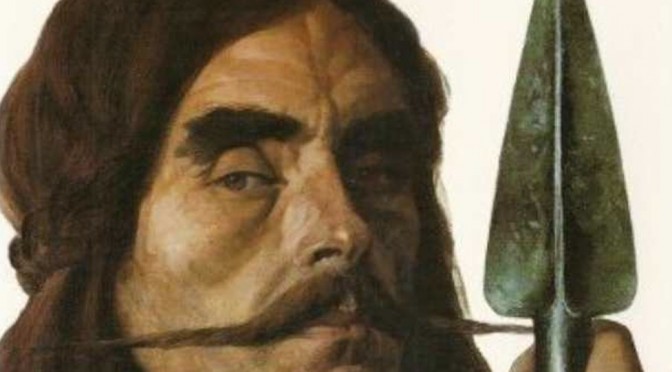The Gallic Empire is a classic example of “pseudo history”. Every person and event can be found in historical documents but the way the implications of recorded events are interpreted has been changed.
Incidentally I have used the cover of Joy Chant’s book High Kings not because her book deals with similar material but because George Sharp’s cover illustration has haunted be for the best part of thirty years. It is the model for William Montacute, Earl of Salisbury in my books about Ximene. In her book Joy tells the history and myths of the Celts as they might have been told by the ancient bards.
I started my research from the surprising realisation that the existence of the “Gallic Empire’’ of AD 260-274 has been glossed over or not mentioned at all in many histories. I believe the reasonfor this omission that this event it does not fit very well with the accepted theories of how the Roman Empire evolved.
A little research quickly reveals that there was not only one attempt to establish a totally parallel empire. This was not an isolated event. The contents of this topic drip with the identification of people and dates. I have done this deliberately, so that readers can check for themselves the validity of the underlying history. It would be a reasonable approach to start with Wikipedia and work outwords from there.
In AD 260 the emperor Valens was defeated by the Parthians. He was captured and spent the rest of his life as a slave. It was the signal for Marcus Cassianus Latinus Posthumous to declare Britain, Gaul and Hispania and Raetia independent of Rome. He created a new empire , on the Roman model complete with senators and consuls. The “Gallic Empire” lasted less than ten years but was only the tip of the iceberg. Hidden away in lists of the Emperors of Rome is the evidence that the Celtic nations never accepted Roman rule, looking for every chance to declare independance. One possible interpretation is that to the Celts the Romans were just another clan, one which was usually powerful enough to provide a High King, having the right of leadership. However when the Roman state put forward a leader who did not meet Celtic expectations they never hesitated to look for and promote an alternative.
Examination of the apparently chaotic succesion of Roman emporers shows that the instability has its origins in the competitiveness between the Western Celts; Hispania, Gaul ,Britannia and Raetia and the Eastern Celts; Germania, Norica Pannonia, Northern Moesia and Western Dacia. The armies in these areas who usually had large numbers of the local population in their ranks, consistantly voted for their own commanders as “High Kings” and therefore Emperors.
If the two armies voted for different candidates, and they almost always did, then the way of solving the difference was the Celtic way – confrontation.
There were of course civil wars in Rome before the Gauls were taken into the empire but those wars were quite different, they were political, to decide how Rome was structured, not to decide who led Rome.
Rome tolerated the continual Celtic interference, and became subject to an essentially Celtic culture, because of the importance of the Western Empire and the wealth created by it. However, as pressures from outside the empire grew, the instability caused by the celtic culture became critical. It had become so much of the “Roman Way” that Roman central administration either did not recognise or could not counteract the damage it was doing.
It took a Non Roman Magister Militarum, Stilicho to recognise the root cause of Rome’s instability. Stilicho spent much of his life trying to stabilise the empire, but it was only after an unsucessful visit to Britain and involvement in internal conflicts within Britain that he recognised that the problem was the Celtic Culture. His answer was innovative. Allow Non-Celtic peoples, Angles, Saxons, Jutes, Alemani,Burgundians,Sueves,Alans,Vandals, to flood through the western empire and destroy the Celtic structure.
It was not intended to be the end of the empire as he had a plan to the reconquer the West at some later date, after the Celtic structure had been destroyed. It is possible that the Visigoths were used in an initial attempt to retake the empire (only four years after the original migrations). In the event they also set up an independent state.
The retaking of the West was attempted much later under Valantinian. Valantian’s invasion of the west failed because in the interregnum local groups had merged for self protection and slowly but surely leaders emerged who guided various groupings towards nationhood.
The Celtic culture was maintained down the atlantic seaboard and in the Pyrenees but the process of discrimination, assimilation and absorption and occasionally elimination has carried through until the 21st century. However in Occitan the harp and the bagpipes are still played.
[/column]